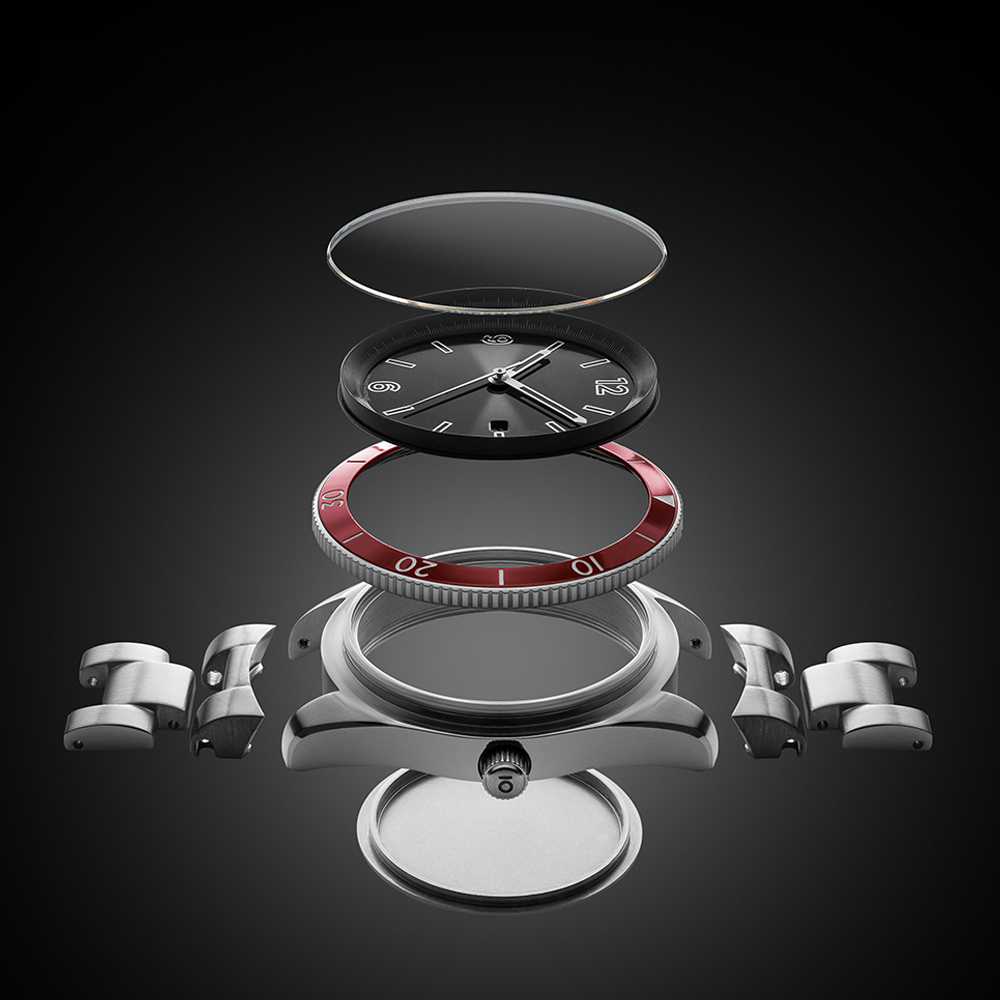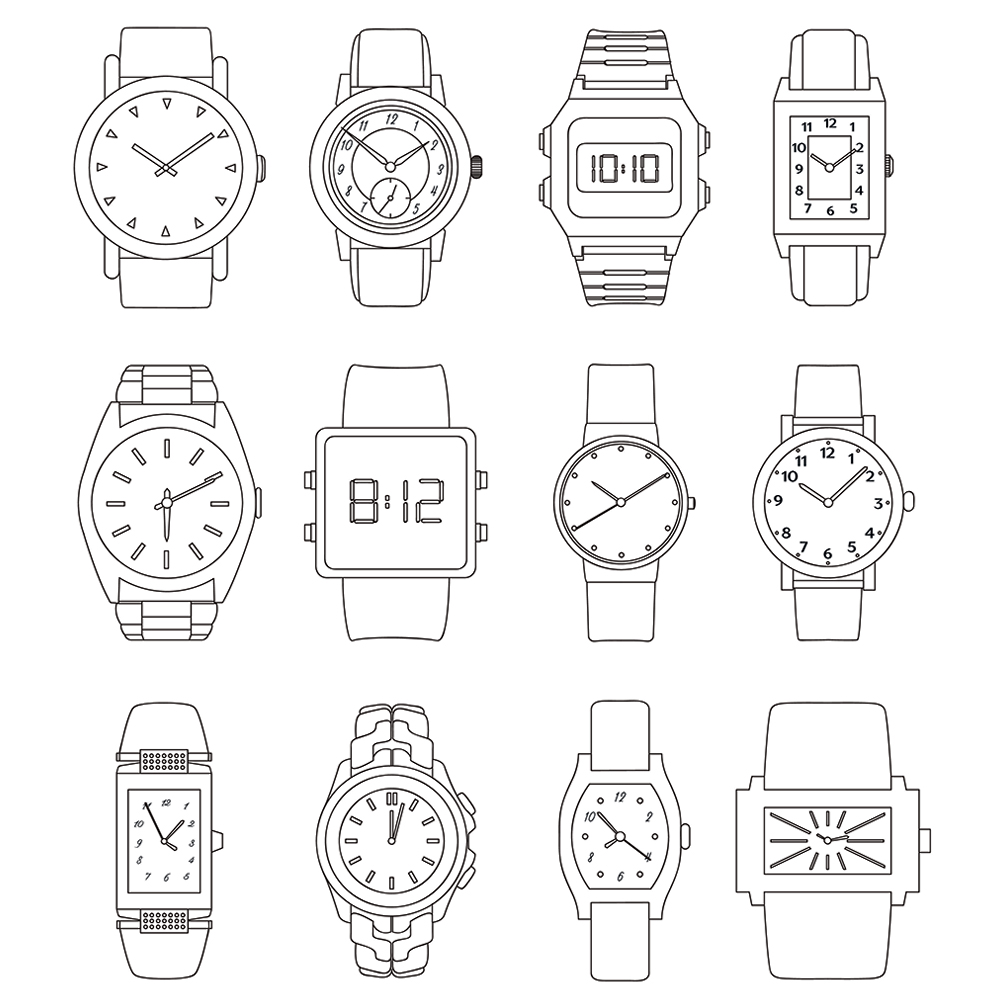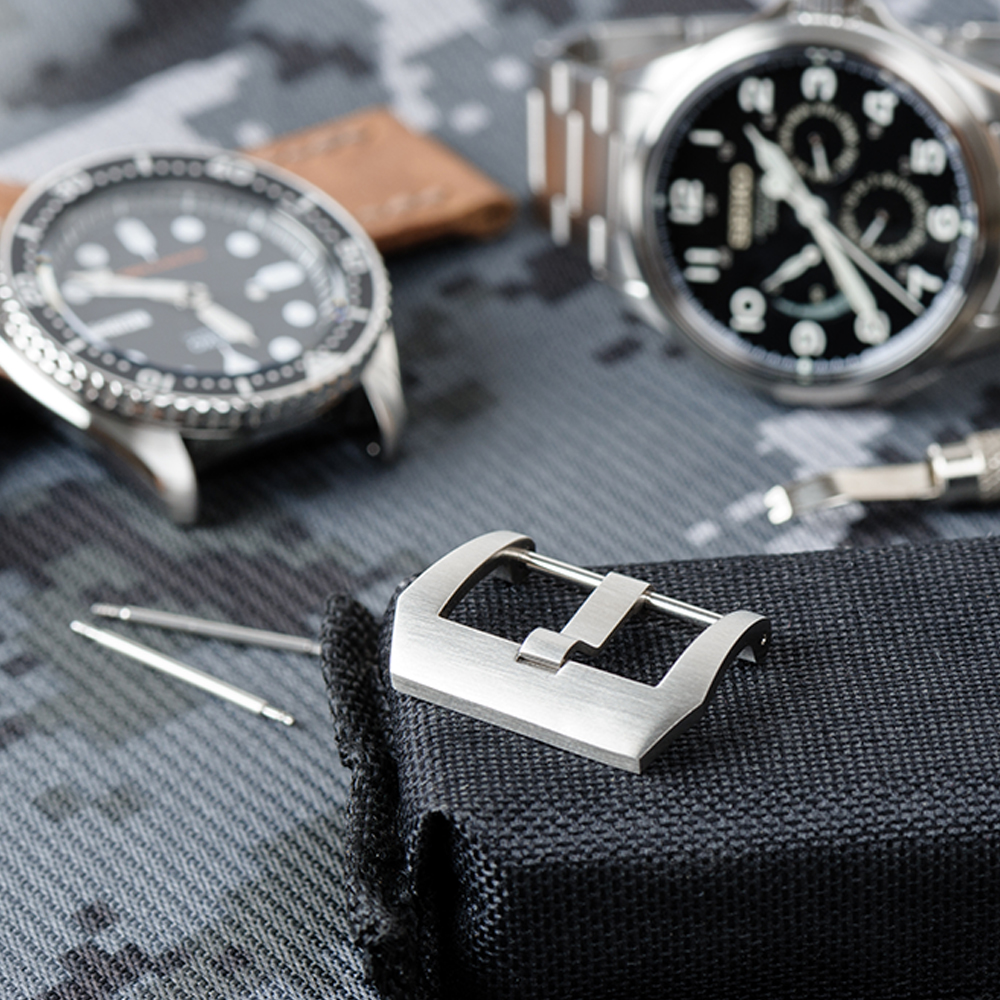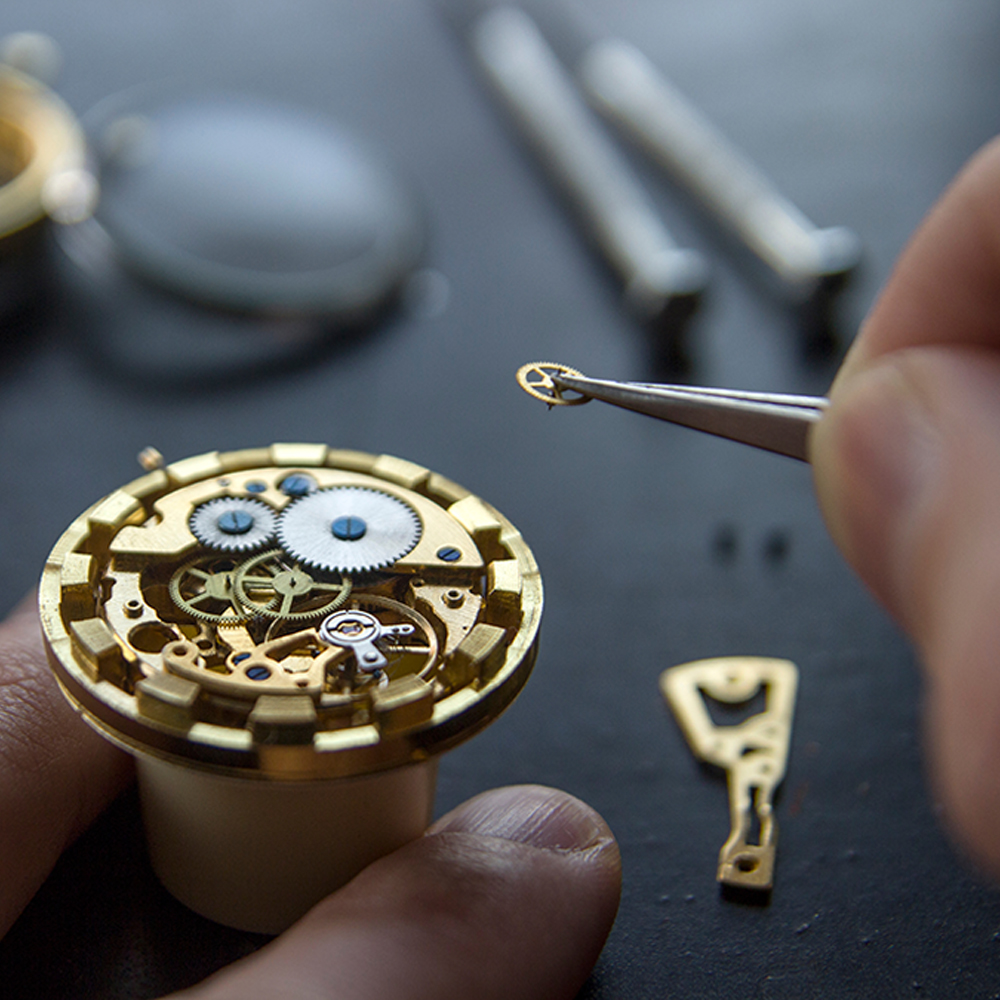Pusher
A watch pusher is a small button-like component found on the side of a watch case. Unlike the crown, which is primarily used for time setting, the pusher is designed to perform additional functions or activate specific features of the watch. The number, placement, and design of pushers can vary depending on the watch's complications and functionalities.
Common uses of pushers include controlling chronograph functions, adjusting multiple time zones, or activating other complications. Pushers provide enhanced functionality and versatility to the watch, allowing users to interact with and customize various features beyond basic timekeeping.
Lugs
Lugs are the protruding extensions or arms located on either side of a watch case. They serve as attachment points for the watch strap or bracelet. Lugs play a crucial role in securing the strap or bracelet to the watch case, ensuring that it remains firmly in place during wear. They come in various shapes, sizes, and designs, adding to the overall aesthetic appeal of the watch. Lugs also provide a means for easily changing the strap or bracelet, allowing wearers to personalize their timepiece and adapt it to different occasions or styles.
Rotor
The rotor on a watch is a disc-shaped component in an automatic (self-winding) mechanical movement. It is designed to rotate freely as the wearer moves their wrist. The rotor's rotation generates energy that winds the watch's mainspring, providing power to keep the watch running. This eliminates the need for manual winding. The rotor is typically visible through the watch's case back and can feature decorative engravings or designs. Its function is essential in maintaining the automatic winding mechanism and ensuring the watch remains powered as long as it is worn and in motion.
Dial
The dial is the face of a watch, typically located beneath the crystal. It displays the hour markers, numerals, indices, and other markings that indicate the time. The dial is an essential component that provides readability and serves as a canvas for various design elements, such as color, texture, and complications.
Hands
The hands are the movable indicators on the dial that point to the current time. They usually include an hour hand, a minute hand, and a seconds hand. The hands are crucial for time reading and are designed in various shapes and styles to enhance legibility and aesthetic appeal.
Hour Marker
Hour markers on a watch are markings or numerals on the dial that indicate the hours. They provide a reference for reading the time, typically in the form of numerals, lines, or dots. Hour markers are designed to be easily readable and contribute to the overall style of the watch.
Subdial
A subdial is a smaller dial within the main dial of a watch. It provides additional information or functions beyond basic timekeeping, such as chronographs, date displays, or moon phase indicators. Subdials enhance the watch's functionality and aesthetics, and their design and arrangement vary depending on the watch's model and complications.
Bezel
In horology, the bezel of a watch surrounds the dial or face and serves functional and aesthetic purposes. It is typically made of materials like metal, ceramic, or precious stones.
During underwater activities, a dive watch actively enhances functionality using its bezel. The bezel rotates unidirectionally and is marked with minute indicators, enabling divers to accurately track elapsed time. Divers align the zero marker with the minute hand at the dive's beginning, effectively measuring the dive duration using the reliable and straightforward bezel tool.
Case
A watch case serves to protect the internal components of a wristwatch, while also contributing to its style and aesthetics. It shields the watch mechanism from dust, moisture, and impacts, while providing a housing for the dial and hands. Additionally, the case incorporates features like crystal, crown, and bezel for functionality and visual appeal.
Exhibition Caseback
An exhibition caseback is a transparent or partially transparent back cover of a watch that allows a view of the movement inside. It showcases the intricate craftsmanship and inner workings of the watch's movement, offering enthusiasts and wearers an opportunity to admire the mechanical intricacies and artistry involved. It is commonly found in luxury watches and provides a captivating experience.
Crystals
The crystal in timepieces acts as a protective cover, shielding delicate components from dust, moisture, and damage. It provides transparency for clear visibility of the dial and hands. The crystal's scratch resistance preserves the timepiece's appearance. Its design enhances aesthetics, while anti-reflective coatings reduce glare. For water-resistant watches, the crystal forms a seal, maintaining water resistance. Overall, the crystal contributes to functionality, durability, and visual appeal.
Strap
The purpose of a watch strap is to securely fasten the watch to the wearer's wrist. It provides both comfort and functionality, allowing the watch to be comfortably worn and easily adjusted for a snug fit. The strap keeps the watch in place during daily activities, ensuring that it remains conveniently accessible for timekeeping. Additionally, the watch strap plays a significant role in the overall aesthetic appeal of the timepiece, enhancing its style and complementing the wearer's personal taste. Watch straps come in various materials, such as leather, metal, rubber, or fabric, offering a range of options to suit different preferences and occasions.






